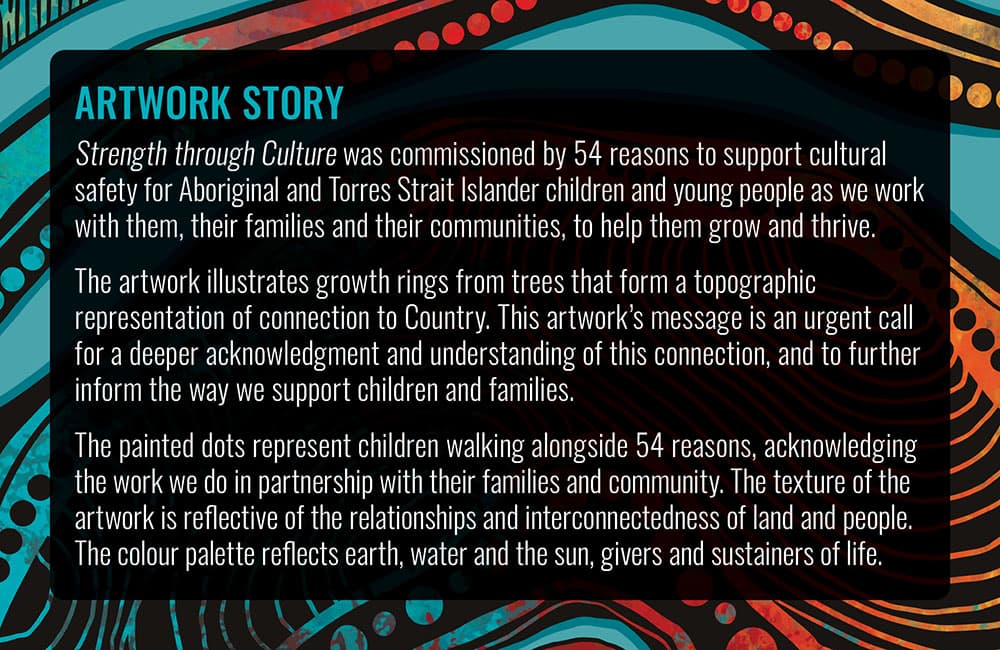She acknowledges that the artwork alone does not automatically equate to a culturally safe organisation, but that the process to develop it - creating space and safety to bring First Nations peoples together to consult and participate in the foundation of the work - put intention into practice.
What was the process?
In order to ensure the end result was something that everyone could connect with, Waller sought expressions of interest from Aboriginal and Torres Strait Islander staff across the country. The advisory group, made up of representatives from each of the states and territories, worked together to develop an artwork story, and to select an artist. After much consideration an artist was chosen - Elizabeth Yanyi Close, represented by Indigenous-owned creative agency Saltwater People.
As part of their selection process, the group felt it was important to consider previous work done, the artist’s own story and who would best reflect the story that the group sought to tell. Excited by the choice of Elizabeth Yanyi Close, Waller notes that the artist was just as significant as the work created. After studying and working as a nurse, Yanyi Close returned to painting as a means to connect with her family and help immerse her children in culture on the APY lands.
.jpg.aspx)
What is its significance?
When asked what it means for our Aboriginal and Torres Strait Islander workforce, Waller reflects that while the final product is “nice-to-have”, it was actually the process to achieving the artwork that holds greater significance. Bringing people together, making time and space, ensuring they have an opportunity to have a voice.